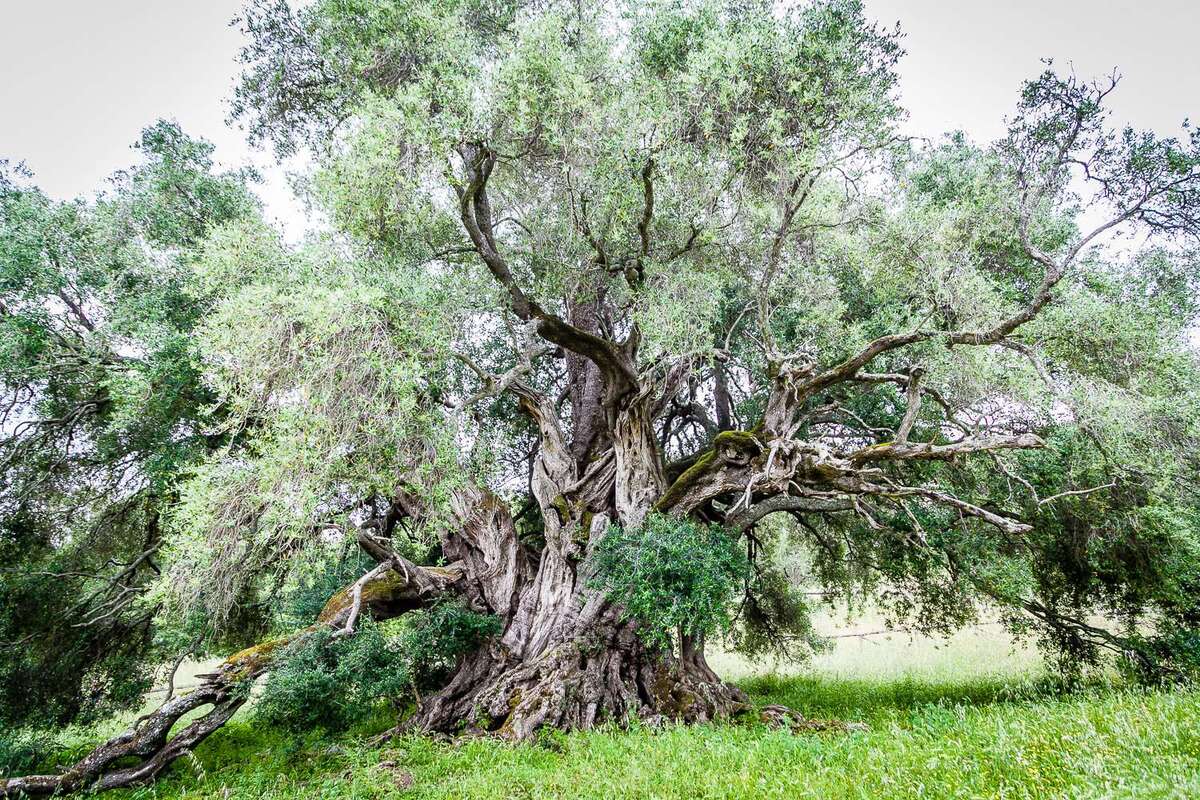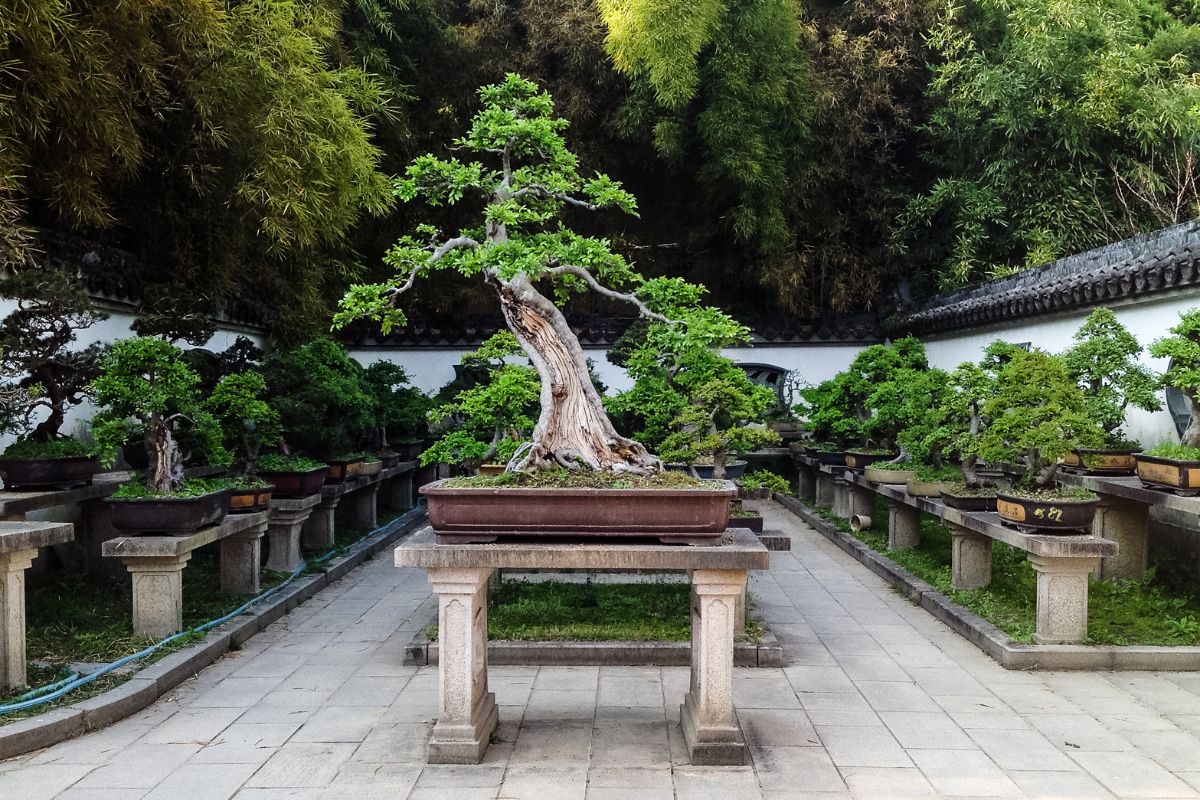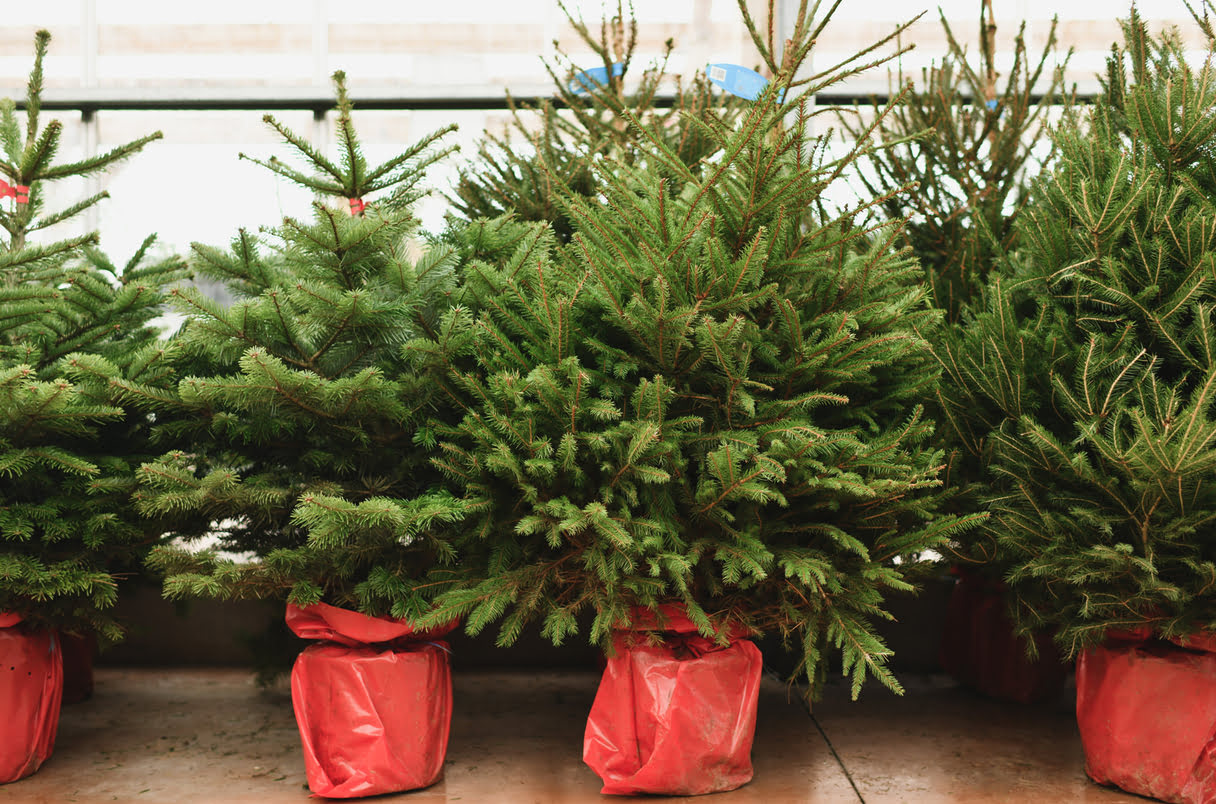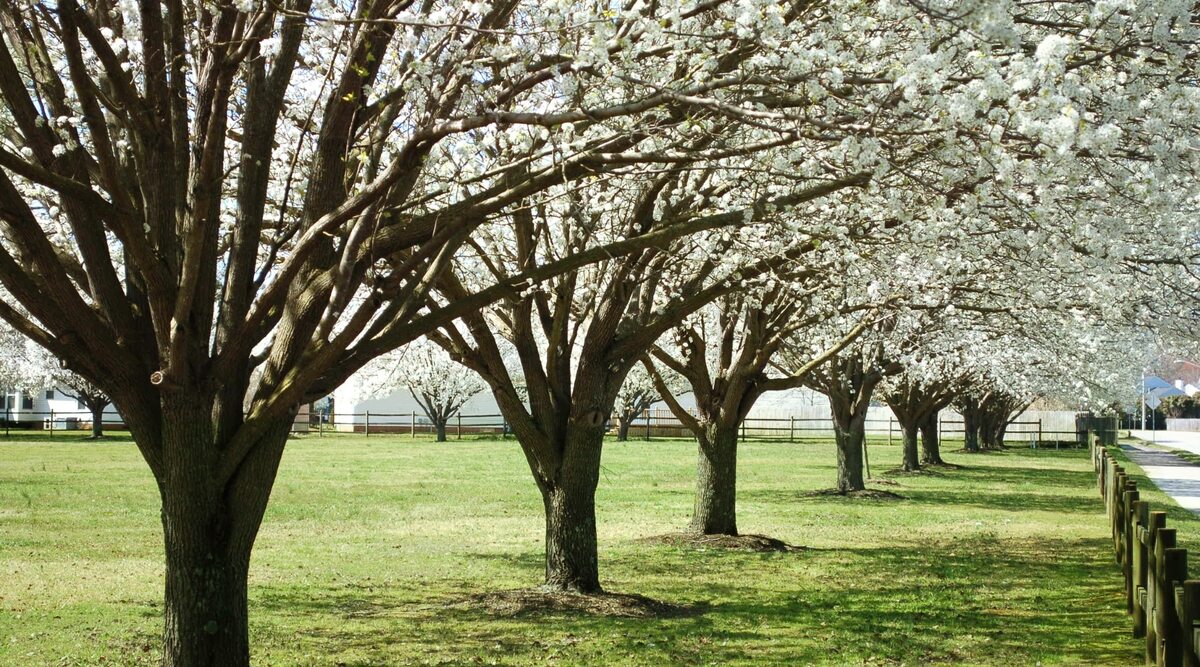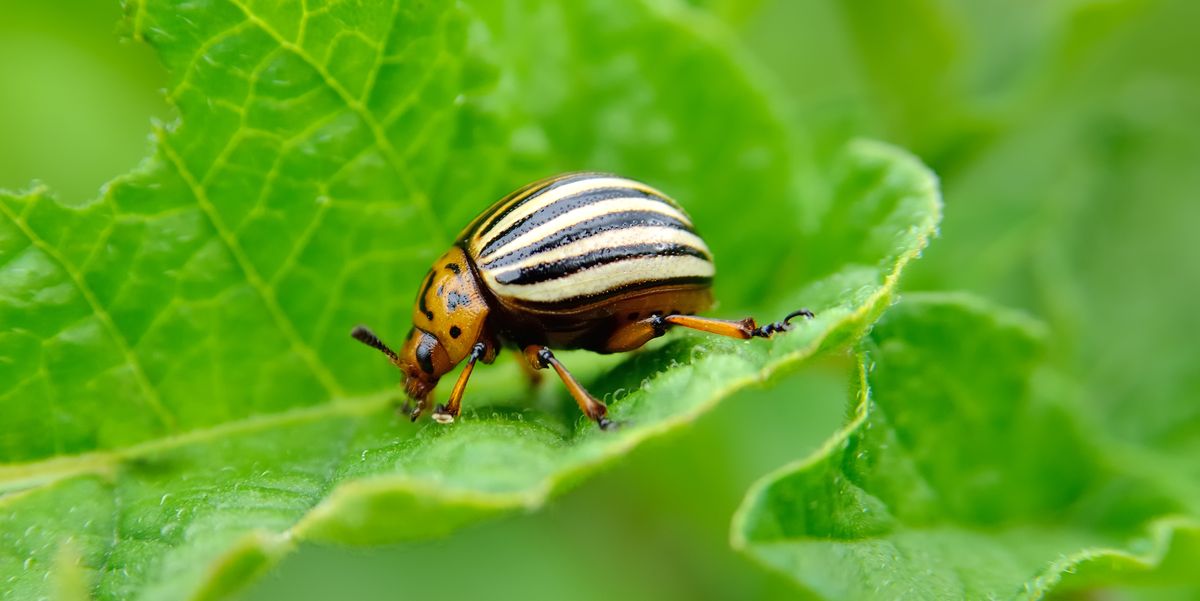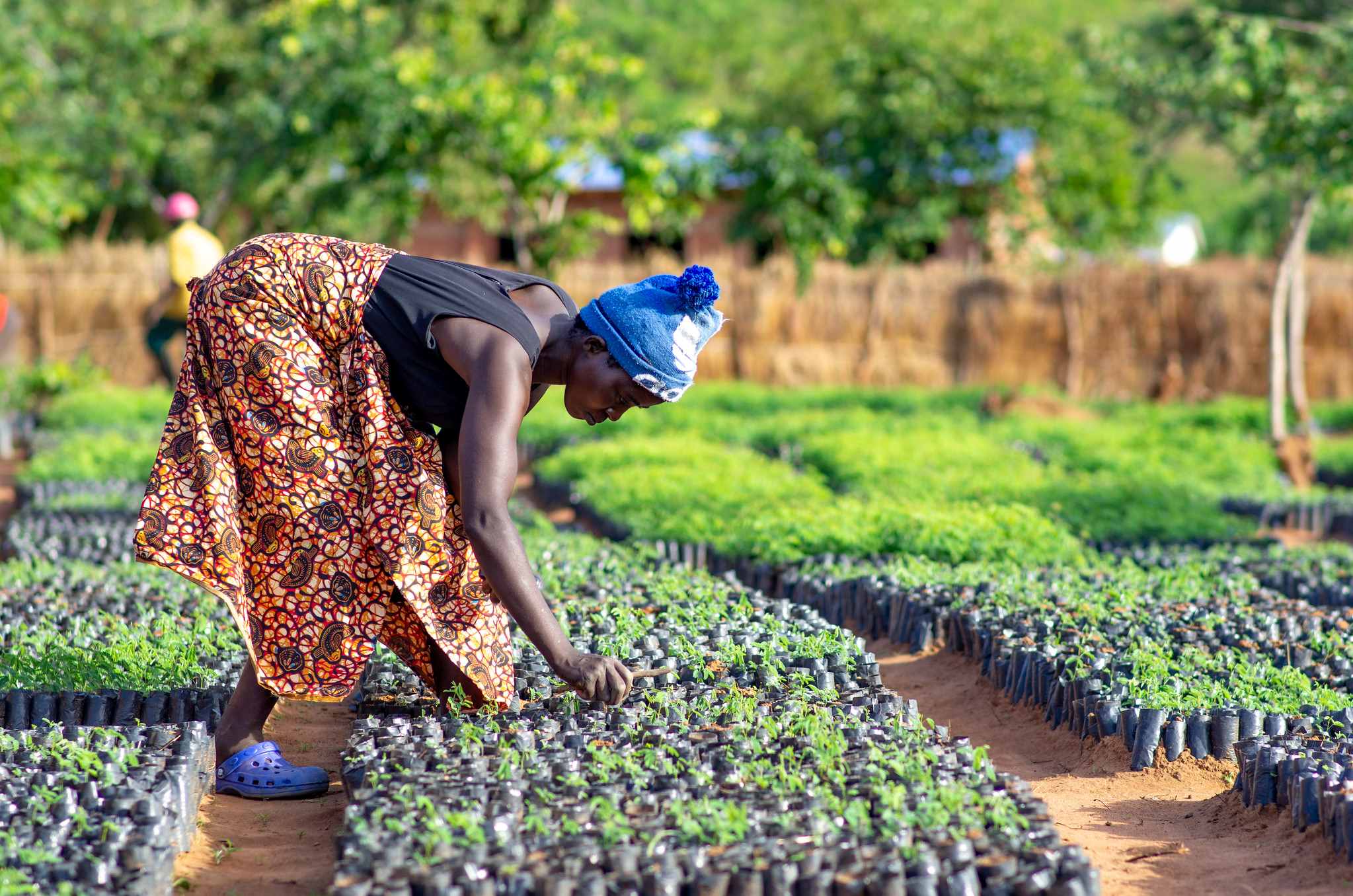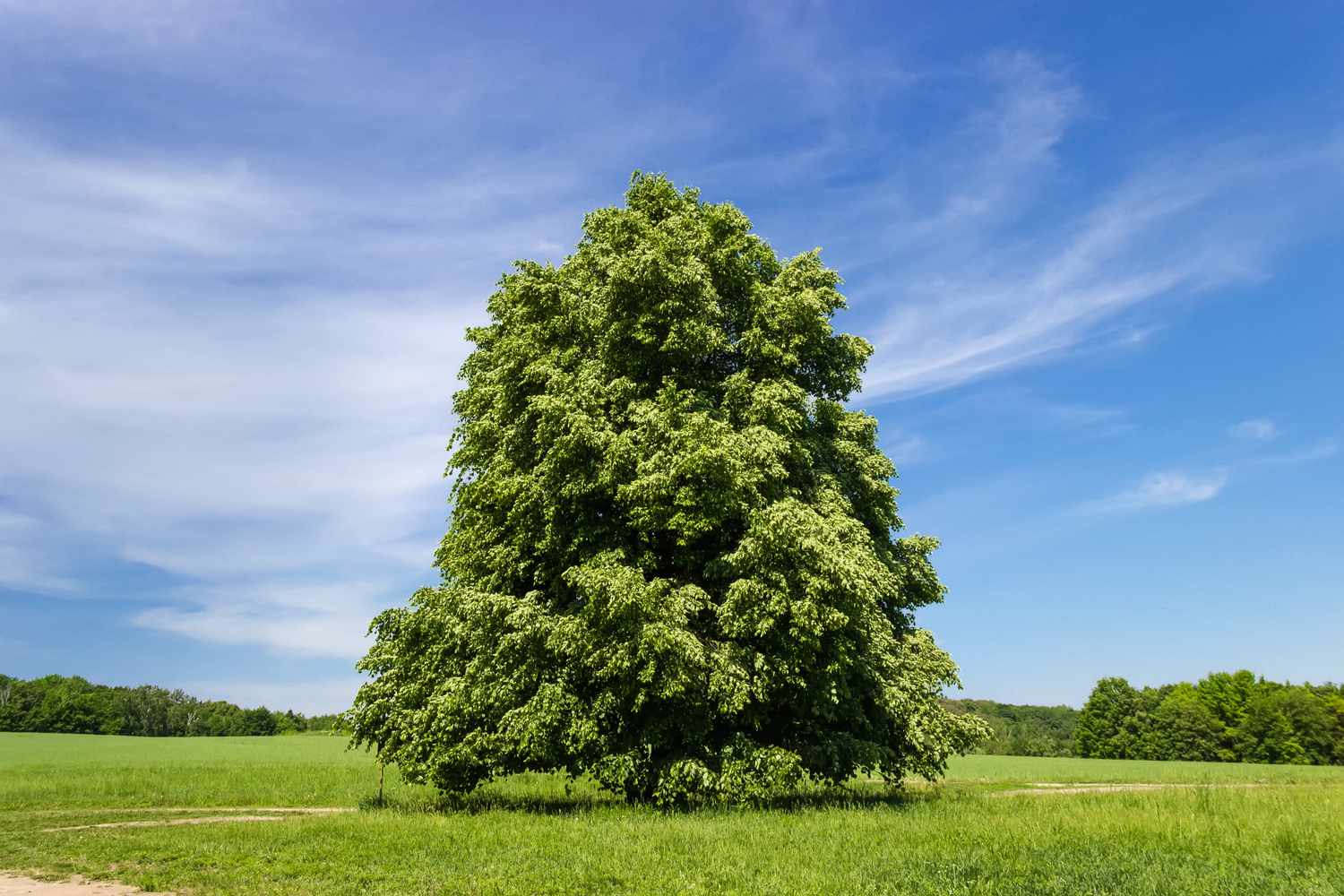Home>Gardening News and Trends>Latest News>What Live In Trees
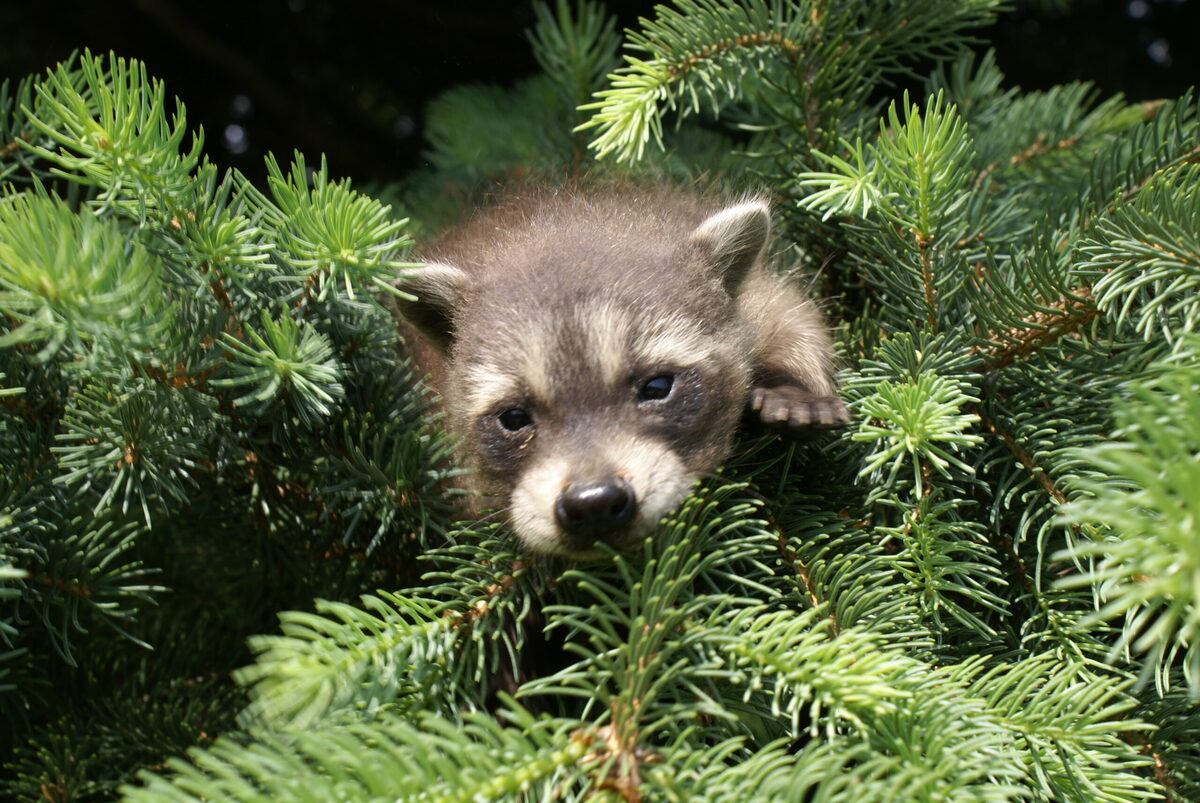

Latest News
What Live In Trees
Modified: February 8, 2024
Stay updated with the latest news about the fascinating species that live in trees. Discover their habitats, behaviors, and unique adaptations.
(Many of the links in this article redirect to a specific reviewed product. Your purchase of these products through affiliate links helps to generate commission for Chicagolandgardening.com, at no extra cost. Learn more)
Table of Contents
Introduction
Trees are not only beautiful and majestic beings that enhance the landscapes we live in, but they also provide a vital ecosystem for a diverse range of organisms. From birds and mammals to insects and plants, trees support a thriving community of life that depend on them for various necessities and habitat.
The importance of trees cannot be overstated. They serve as a source of food, shelter, and protection against predators for many different species. Trees also play a critical role in maintaining the balance of oxygen and carbon dioxide in the atmosphere through the process of photosynthesis. Additionally, trees help prevent soil erosion, provide shade and cooling effects, and contribute to the overall aesthetic value of our surroundings.
Within the lush canopies and rugged trunks of trees, a fascinating array of organisms have made their homes. The diverse range of species that inhabit trees includes birds, mammals, insects, reptiles and amphibians, plants, and fungi. Each of these groups has developed unique adaptations to thrive in the tree’s environment, showcasing the intricacies of nature’s design.
Birds are one of the most iconic creatures found in trees. They use trees as a place to build nests, seek protection from predators, and find a reliable food source. Depending on the species, birds may nest in tree cavities, construct elaborate nests using twigs and leaves, or even create intricate hanging nests from fibers.
Mammals also find refuge in trees. Some species, like squirrels and primates, are known for their tree-climbing abilities. They use branches and limbs as pathways to move between trees, search for food, and establish territories. Certain species of bats, commonly known as tree bats, roost in tree hollows or under loose bark during the day.
Insects, both beneficial and harmful, are abundant in tree ecosystems. Bees and butterflies rely on trees to obtain nectar and pollen, aiding in the pollination process. Wood-boring insects, on the other hand, may damage trees by burrowing into their trunks or branches. Nonetheless, these creatures play an essential role in the cycle of decomposition and nutrient recycling.
Tree-dwelling reptiles and amphibians, such as arboreal snakes and tree frogs, have developed specialized adaptations to navigate the unique challenges of living in trees. They possess gripping structures on their feet or tails that allow them to cling to tree surfaces while hunting for prey or seeking refuge from predators.
Plants that grow and thrive on other plants, such as epiphytes, depend on trees for support and access to sunlight. These include orchids, ferns, and mosses, which establish themselves on tree trunks or branches, deriving nutrients and moisture from the air and rainwater.
Lastly, trees provide a suitable environment for a variety of fungi. Some fungi form beneficial partnerships with trees, known as mycorrhizal associations, which assist in nutrient absorption and disease protection. Others break down organic matter, contributing to the decomposition process.
Throughout this article, we will delve into the fascinating world of organisms that inhabit trees, exploring their unique adaptations and interactions within this dynamic ecosystem. Let us embark on a journey to discover the wonders that live in trees and appreciate the intricate balance of nature that surrounds us.
Importance of Trees
Trees are not only aesthetically pleasing, but they also play a crucial role in maintaining the overall health and balance of our planet. Their importance extends far beyond their visual appeal. Here are some key reasons why trees are vital for both humans and the environment:
- Oxygen production: Through the process of photosynthesis, trees absorb carbon dioxide and release oxygen, providing us with the essential gas for respiration. They act as nature’s oxygen generators, helping to combat climate change and providing us with clean air to breathe.
- Climate regulation: Trees have a remarkable ability to regulate climate by absorbing greenhouse gases, such as carbon dioxide, and reducing the effects of global warming. Their presence helps mitigate the harsh impact of climate change, maintaining stable temperatures and protecting against extreme weather events.
- Soil conservation: The roots of trees help bind the soil together, preventing erosion and retaining moisture. This is especially crucial in areas prone to flooding and landslides, as trees provide stability to the land and reduce the risk of disasters.
- Biodiversity support: Trees provide habitat and food sources for a wide range of organisms, thus promoting biodiversity. From insects and birds to mammals and fungi, many species rely on trees for their survival. A healthy and abundant tree population contributes to the preservation of various ecosystems and their delicate balance.
- Water cycle regulation: Trees act as natural water filters, absorbing and filtering rainwater, reducing pollution, and recharging groundwater. Additionally, they release moisture into the atmosphere through a process called transpiration, helping to maintain humidity levels and promote rainfall.
- Human well-being: Trees have a positive impact on human health and well-being. They provide shade, reducing the effects of harmful UV rays and providing relief from the heat. Spending time in green environments, such as parks and forests, has been shown to reduce stress, improve mood, and enhance overall mental and physical health.
- Economic value: Trees also possess considerable economic value. They contribute to industries such as forestry, logging, and tourism, providing employment opportunities and generating income. Additionally, trees increase property values and improve the aesthetic appeal of urban and rural areas, attracting businesses and investments.
As we can see, trees are vital pillars of our ecosystem, with far-reaching benefits and implications. The importance of preserving and protecting our existing tree population cannot be overstated. Through responsible tree management and conservation efforts, we can ensure that future generations can continue to enjoy the numerous advantages that trees provide.
Types of Organisms that Live in Trees
Trees are home to a wide variety of organisms whose lives are intricately intertwined with the structure and resources that trees provide. From birds and mammals to insects and plants, these tree-dwelling organisms have evolved unique adaptations to thrive in this dynamic habitat. Let’s explore some of the main groups of organisms that call trees their home:
- Birds: Trees serve as important habitats for numerous bird species. They use trees for nesting, roosting, and foraging. Birds build nests in tree cavities, construct intricate nests using twigs and leaves, or rely on the branches and leaves for hiding and protection. From songbirds to raptors like eagles and owls, the canopy of trees offers a safe haven for these feathered creatures.
- Mammals: Many mammals have adapted to arboreal lifestyles, meaning they can climb and live in trees. Squirrels are perhaps the most well-known tree-dwelling mammals, using trees as a place to build nests, store food, and move between branches. Primates, such as monkeys and gibbons, are highly skilled climbers, using trees as a means of transportation and foraging. Bats, too, can be found roosting in tree hollows during the day.
- Insects: Trees provide an abundance of resources for insects. Bees and butterflies rely on tree blossoms for nectar and pollen, contributing to the pollination of many plant species. Wood-boring insects such as beetles and termites have adapted to feed on the wood and bark of trees. In addition, tree crevices and branches offer shelter for countless other insects, spiders, and arthropods.
- Plants: Epiphytes are plants that grow on trees but do not absorb nutrients from them. Orchids, bromeliads, and ferns are examples of epiphytic plants that anchor themselves to trees and derive moisture and nutrients from the air and rain. These plants play an important role in contributing to the diversity and aesthetics of the forest canopy.
- Fungi: Fungi are crucial in the decomposition process, breaking down dead organic matter in trees and recycling nutrients back into the ecosystem. Some fungi form beneficial relationships with trees, like mycorrhizal fungi, which assist in nutrient uptake for the tree’s roots. Others, like bracket fungi and mushrooms, are visible indicators of the vibrant fungal community that exists in trees.
Within these groups, there is a vast array of species each with their unique adaptations for specialized niches within the tree ecosystem. The interactions between these organisms can be complex and intricate, forming a delicate web of dependencies and relationships. Trees provide not only physical shelter and food resources but also serve as important connections between organisms within the larger ecosystem.
Understanding the diversity and significance of the tree-dwelling organisms helps us appreciate the incredible complexity and interdependence of nature. By preserving and maintaining healthy tree populations, we ensure the continued thriving of these diverse communities and the ecological benefits they provide.
Birds in Trees
Trees provide a vital habitat for a diverse range of bird species. The unique structure of trees, with their branches, foliage, and hollows, offers birds various resources and nesting opportunities. Let’s explore the fascinating world of birds that call trees their home:
- Nesting: Trees serve as important nesting sites for many bird species. Different birds have distinct nesting preferences, with some utilizing natural tree cavities, while others build intricate nests using twigs, leaves, and other materials. The height and location of nests within the tree canopy can vary, providing safety from predators as well as exposure to sunlight and suitable microclimates.
- Foraging: The branches and leaves of trees function as feeding grounds for various bird species. Insects residing on trees serve as a food source for insectivorous birds, while fruit-bearing trees attract frugivorous species. Some birds, like woodpeckers, search for insects hiding within the crevices and bark of trees, using their strong beaks to extract their prey.
- Roosting: Trees provide sheltered spaces for birds to rest and roost during the night or during inclement weather. Some birds prefer to roost on exposed branches to keep a lookout for potential predators, while others seek out denser foliage for protection and warmth.
- Mating Displays: Male birds often utilize trees as stages for impressive courtship displays to attract mates. They may perch on high branches and sing complex songs or perform elaborate aerial displays, showcasing their physical abilities and attractiveness.
- Migration: Trees play a significant role in the migratory routes and stopover sites for many bird species. During long-distance migrations, birds rely on specific tree habitats to rest, refuel, and regain strength before continuing their arduous journeys. These stopover sites in wooded areas are crucial for their survival.
- Interaction with Other Birds: Trees are communal spaces where birds interact with each other. They engage in territorial disputes, vocalize for communication, and engage in social behaviors. Some bird species form flocks and move together through the tree canopy, providing safety in numbers and sharing information about food sources and potential threats.
Each bird species has its unique adaptations and requirements for living in trees. From small songbirds to large raptors, birds have evolved to navigate the branches and utilize the resources that trees offer. The diverse array of birds found in trees contributes to the biodiversity and ecological balance of forests and other wooded environments.
It is important to recognize and appreciate the crucial role that trees play in supporting bird populations. Conservation efforts that protect and restore tree habitats are essential for maintaining healthy bird populations and the ecosystems they inhabit. By appreciating and valuing the presence of birds in trees, we can continue to enjoy their beauty and be inspired by their remarkable behaviors and adaptations.
Mammals in Trees
Trees provide a dynamic and adaptable habitat for various mammalian species. From agile climbers to skilled jumpers, mammals have developed unique adaptations to thrive in the tree canopy. Let’s explore the fascinating world of mammals that call trees their home:
- Squirrels: Known for their incredible climbing abilities, squirrels are perhaps the most iconic tree-dwelling mammals. They use their sharp claws and agile bodies to navigate tree trunks and branches. Squirrels build nests, known as dreys, high up in tree canopies, using leaves, twigs, and moss as construction materials.
- Primates: Many primate species, such as monkeys and gibbons, are highly adapted for life in the canopy. They possess long limbs and dexterous hands that enable them to swing from branch to branch or leap between trees. Tree-dwelling primates use trees for feeding, socializing, and finding shelter from predators.
- Bats: Bats are the only mammals capable of sustained flight. While many bat species roost in caves or buildings, some are specialized for life in trees. These tree-dwelling bats, known as tree bats, may roost in tree hollows during the day or hang from branches upside down. Trees provide a safe and sheltered environment for these nocturnal creatures.
- Tree Shrews: Tree shrews are small, arboreal mammals that spend most of their lives in trees. They have long tails for balance and excellent climbing abilities. Tree shrews scurry along branches in search of fruits, insects, and nectar. They construct nests made from leaves and branches in tree hollows or dense foliage.
- Marsupials: Some marsupial species, such as the sugar glider, are specifically adapted for tree life. Sugar gliders have a membrane called a patagium that extends between their limbs, allowing them to glide from tree to tree. They build nests in tree cavities or construct leafy nests in the branches.
- Arboreal Carnivores: Several carnivorous mammals, such as the clouded leopard and the margay, have adapted to life in the trees. These predators have strong limbs, sharp claws, and exceptional agility. They use trees to stalk and ambush their prey, utilizing the cover of foliage to their advantage.
Mammals in trees have developed remarkable adaptations to their arboreal lifestyle. They have evolved specialized limbs, gripping pads on their paws, and keen senses to navigate the complex tree canopy. These adaptations allow them to access food sources, find shelter, and avoid predators in their elevated environment.
Tree-dwelling mammals play essential roles in the ecosystem. They aid in seed dispersal by feeding on fruits and nuts. Some mammals, like bats and primates, are pollinators, assisting in the reproduction of various tree species. These interactions between mammals and trees contribute to the overall health and function of forest ecosystems.
Preserving and protecting tree habitats is crucial for the conservation of mammalian species that rely on trees for survival. By understanding and appreciating the diversity and uniqueness of mammals in trees, we can ensure the conservation of these remarkable creatures and the delicate web of life in which they are interconnected.
Insects in Trees
Trees provide a diverse and abundant habitat for countless insect species. From minute pollinators to wood-boring pests, insects play crucial roles in tree ecosystems. Let’s delve into the fascinating world of insects that call trees their home:
- Pollinators: Bees, butterflies, and other insects are essential pollinators for many tree species. These insects transfer pollen from one flower to another, enabling the trees to reproduce. They rely on the nectar and pollen provided by tree blossoms as a source of food.
- Wood-boring Insects: Some insects have adapted to exploit trees as a source of food and shelter. Wood-boring insects, such as beetles and termites, tunnel through the wood, consuming it as they go. While these insects can cause damage to trees when their populations become overwhelming, they also play a crucial role in the natural cycle of decomposition and nutrient recycling.
- Leaf Eaters: Many insects rely on leaves as their primary food source. They consume the foliage of trees, helping to maintain the tree’s health by removing older or damaged leaves. Caterpillars, for example, will voraciously feed on leaves before undergoing metamorphosis into butterflies or moths.
- Sap-feeders: Some insects, such as aphids and scale insects, feed on the sap of trees. They pierce the bark or leaves, extracting the nutrient-rich sap. While these insects can cause damage to the tree, they also provide a valuable food source for other organisms, including ants and birds.
- Beneficial Insects: Not all insects found in trees are pests. Many predatory insects, like mantises and ladybugs, hunt on trees for smaller insects, helping to control their populations. These beneficial insects play a crucial role in maintaining the ecological balance within tree ecosystems.
- Web-builders: Spiders and certain insects, like tent caterpillars, create intricate webs and nests in trees. These structures provide protection and a secure place for them to catch prey. The presence of these webs adds to the intricate aesthetics and diversity of life found in tree canopies.
The interactions between insects and trees are complex and multifaceted. Trees provide a food source, protective shelter, and breeding grounds for insects, while insects contribute to the pollination of trees, decomposition of organic matter, and nutrient cycling within the ecosystem.
It is important to note that some insects can become pests when their populations boom, causing damage to trees or affecting human activities. Proper pest management strategies, including the use of natural predators and targeted interventions, are necessary for maintaining a balanced insect population while minimizing negative impacts on trees.
Understanding the intricate relationships between insects and trees allows us to appreciate the incredible diversity and interconnectedness of life within tree ecosystems. By preserving and protecting trees and their insect inhabitants, we ensure the health and sustainability of these vital ecosystems.
Reptiles and Amphibians in Trees
Trees provide a unique and diverse habitat for many reptiles and amphibians. While commonly associated with terrestrial or aquatic environments, these ectothermic creatures have adapted to live in and navigate the tree canopy. Let’s explore the fascinating world of reptiles and amphibians that call trees their home:
- Arboreal Snakes: Some snake species have evolved remarkable adaptations for life in trees. These arboreal snakes possess prehensile tails or specialized scales on their bellies, allowing them to grip onto branches and move with ease. They use the trees a means to hunt prey, escape predators, and seek refuge.
- Tree Frogs: Tree frogs are excellent climbers, with adhesive toe pads and long limbs. They use their climbing abilities to navigate tree trunks and leap between branches. Tree frogs often create foam nests or lay their eggs on leaves, branches, or tree hollows. They depend on trees for protection from predators and access to insects for food.
- Chameleons: Chameleons are known for their exceptional camouflage abilities. They can change their skin color to match their surroundings, including the leaves and branches of trees. Chameleons use their zygodactyl feet (with two toes facing forward and two toes facing backward) to grip onto tree branches as they search for insects.
- Anoles: Anoles are a group of lizards that are remarkably adapted to arboreal life. They have specialized toe pads that allow them to cling tightly to vertical surfaces. Anoles use trees for basking, hunting insects, and establishing territories. Some species are even capable of expanding a throat fan, known as a dewlap, to communicate or attract mates.
- Tree Snails: Tree snails are unique gastropods that live primarily on trees. They possess a shell that acts as protection and a humid microhabitat for their soft bodies. Tree snails feed on fungus, algae, and decaying vegetation found on tree surfaces. They contribute to nutrient cycling and play a role in the ecosystem’s balance.
- Tree Monitor Lizards: Tree monitor lizards are arboreal reptiles commonly found in tropical forests. They have long tails, strong limbs, and sharp claws, enabling them to climb trees with ease. Tree monitors primarily feed on small mammals, birds, eggs, and insects found in the tree canopy.
Reptiles and amphibians that inhabit trees have evolved unique adaptations to thrive in this specialized environment. Trees provide them with a variety of benefits, including protection from predators, access to prey, and a microclimate that aids in thermoregulation.
The presence of reptiles and amphibians in tree ecosystems contributes to the overall biodiversity and ecological balance. They participate in nutrient cycling, prey-predator relationships, and seed dispersal, playing fundamental roles in maintaining the health and functioning of these ecosystems.
Preserving and protecting tree habitats is paramount for the conservation of reptile and amphibian species that rely on them. By understanding and appreciating the diversity and complexity of reptiles and amphibians in trees, we can ensure the preservation of these remarkable creatures and the intricate web of life woven among the branches and leaves.
Plants in Trees
While trees themselves are plants, there are also numerous other plant species that have adapted to live and thrive in tree canopies. These plants, known as epiphytes, depend on trees for support and access to sunlight. Let’s explore the intriguing world of plants that grow in trees:
- Orchids: Orchids are beautiful and diverse flowering plants that often grow on tree trunks, branches, or in tree cavities. They possess specialized aerial roots that cling to the tree, allowing them to access nutrients and moisture from the air and rainwater. Orchids have co-evolved with certain tree species and are highly dependent on their hosts for survival.
- Bromeliads: Bromeliads are a family of plants that includes a diverse range of species. These epiphytic plants are known for their striking rosette-like structures and vibrant colors. Bromeliads have unique adaptations that enable them to absorb water and nutrients through their leaves, collecting debris and rainwater in their central cups.
- Ferns: Many fern species are capable of growing on tree trunks or branches. These ferns use the moist environment of the tree canopy to survive. They have specialized structures called rhizomes that allow them to attach to the tree and extract nutrients and moisture from the air and rain that trickles down the tree trunk.
- Mosses: Mosses are small, non-vascular plants that often form dense mats on tree surfaces, particularly in areas with high humidity. Mosses do not absorb nutrients through roots but rely on water and nutrients from rain and air. They play a crucial role in retaining moisture, preventing erosion, and creating microhabitats for other organisms.
- Aroids: Aroids, such as the famous “Swiss cheese plant” or Monstera deliciosa, are known for their large leaves with unique perforations. Some aroids are epiphytes, using trees as a host structure to climb towards sunlight. They have aerial roots that help them absorb nutrients and moisture from the air and rainwater.
- Spanish Moss: Spanish moss is an epiphytic bromeliad that drapes elegantly from tree branches in warm, humid regions. It does not harm the host tree but uses it as a structure to grow and access sunlight. Spanish moss absorbs moisture and nutrients from the air and rain, contributing to the overall aesthetics and ecological balance of its habitat.
Epiphytic plants in trees provide numerous benefits to both their host trees and the surrounding ecosystem. They often serve as microhabitats for other organisms, including insects, spiders, and small vertebrates. Epiphytes also contribute to the retention of moisture, promotion of nutrient cycling, and the overall beauty and biodiversity of tree ecosystems.
The presence of epiphytes in tree canopies highlights the incredible adaptability and resilience of plants. Through their unique adaptations, they have found ingenious ways to survive and thrive in challenging environments, contributing to the intricate tapestry of life in trees.
Preserving and protecting trees is essential for the conservation of these fascinating plant species. By valuing and appreciating the diverse array of plants that grow in trees, we can ensure the continued existence of these remarkable organisms and the stunning sights they create in tree canopies.
Fungi in Trees
Trees provide an extensive and essential habitat for a wide variety of fungi. Found on and within tree trunks, branches, and roots, these organisms play vital roles in the decomposition process, nutrient cycling, and the overall health of tree ecosystems. Let’s explore the fascinating world of fungi that inhabit trees:
- Mycorrhizal Fungi: Mycorrhizal fungi form symbiotic associations with tree roots, known as mycorrhizae. They extend the tree root system, increasing the surface area for nutrient absorption. In return, the fungi receive carbohydrates produced by the tree through photosynthesis. This mutually beneficial relationship enhances nutrient uptake and improves the tree’s resistance to stress.
- Decomposer Fungi: Decomposer fungi, also called saprophytic fungi, play a crucial role in the breakdown of dead organic matter within trees. They break down fallen leaves, wood debris, and other organic materials, releasing nutrients that can be absorbed by the tree and other organisms. These fungi contribute to the recycling of nutrients and maintain the overall health of the tree ecosystem.
- Pathogenic Fungi: Some fungi can cause diseases in trees. These pathogens can infect the roots, trunk, or branches, leading to decay, cankers, or other structural damage. While pathogenic fungi can be detrimental to individual trees, they also play a role in the natural process of forest dynamics by targeting weakened or stressed trees, allowing for the regeneration of healthier individuals.
- Endophytic Fungi: Endophytic fungi reside within healthy tree tissues without causing apparent harm. They form mutually beneficial relationships with trees, enhancing their resistance to pathogens, pests, and environmental stressors. Endophytic fungi can produce compounds that repel herbivores or inhibit the growth of harmful microbes, ultimately contributing to the overall health and survival of the tree.
- Bracket Fungi: Bracket fungi, also known as shelf fungi, are easily recognizable on the trunks or branches of trees. They form large, shelf-like structures that release spores and play a significant role in the decomposition process. These fungi break down lignin and cellulose, contributing to the recycling of carbon and other organic matter within the tree ecosystem.
- Mushrooms: Mushrooms are the fruiting bodies of underground fungal networks, known as mycelium. They often appear at the base of trees or on decaying logs, indicating the presence of beneficial fungi in the tree ecosystem. Mushrooms play a vital role in spreading spores, allowing fungi to reproduce and disperse throughout the forest.
The presence of fungi in tree ecosystems is important for maintaining the balance and sustainability of the environment. They contribute to the breakdown of organic matter, nutrient cycling, and the establishment of beneficial relationships with trees and other organisms.
Understanding the diverse roles that fungi play in trees is crucial for forest management and conservation. Promoting the growth of mycorrhizal fungi, managing the impacts of pathogenic fungi, and providing suitable habitats for decomposer fungi are all vital steps in maintaining the health and resilience of tree ecosystems.
By recognizing and appreciating the vital role of fungi in trees, we can foster a deeper understanding of the intricate and interconnected web of life within these ecosystems. Preserving and protecting trees also means safeguarding the valuable roles that fungi play in maintaining the health and balance of the natural world.
Interactions between Tree-Dwelling Organisms
Within the intricate ecosystem of trees, a rich tapestry of interactions unfolds between the organisms that call trees their home. From complex symbiotic relationships to predator-prey dynamics, these interactions shape the functioning and stability of tree ecosystems. Let’s explore some of the fascinating interactions that occur between tree-dwelling organisms:
- Pollination: Birds, bees, butterflies, and other insects play a crucial role in the pollination of trees. As they visit flowers in search of nectar or pollen, they inadvertently transfer pollen from one flower to another, facilitating fertilization and seed production. Trees and their pollinators have co-evolved over time, each depending on the other for reproduction and survival.
- Seed Dispersal: Many tree species rely on animals to disperse their seeds. Birds, mammals, and even some reptiles and amphibians consume fruits and then spread the seeds through their feces. This dispersal mechanism allows trees to colonize new areas and increases their chances of survival and genetic diversity.
- Mycorrhizal Associations: Mycorrhizal fungi form mutually beneficial associations with tree roots. The fungi extend the tree’s nutrient-absorbing capabilities, while the tree provides the fungus with carbohydrates. This symbiotic relationship enhances the tree’s ability to acquire nutrients, particularly phosphorus, and contributes to its growth and overall health.
- Predator-Prey Relationships: In the tree canopy, predation is a common interaction between organisms. Birds of prey, such as hawks and owls, hunt for small mammals, reptiles, and other birds among the branches. Tree-dwelling mammals, such as snakes, squirrels, and primates, also hunt for insects, birds’ eggs, or other small vertebrates.
- Competition: Interactions between organisms can also involve competition for resources. Trees, for example, compete for sunlight, water, and nutrients, as their canopies may shade out competitors below. Additionally, epiphytic plants may compete for space on tree branches, as they strive to access sunlight and nutrients.
- Commensalism: Some interactions between organisms are commensal, benefiting one species while having little effect on the other. For instance, epiphytic plants may use trees as physical support without significantly impacting the tree’s growth or health. Similarly, certain insects may use trees for shelter without directly benefiting or harming the tree.
These interactions, among many others, create a complex web of interdependence within tree ecosystems. They contribute to the overall biodiversity, stability, and resilience of these habitats. Each organism’s survival and well-being are impacted by the presence and activities of other tree-dwelling organisms.
Understanding and studying these interactions provide valuable insights into the functioning and conservation of tree ecosystems. Protecting the habitats of key organisms, promoting pollinator populations, and preserving the delicate balance of predator-prey relationships are crucial for maintaining healthy tree ecosystems.
By appreciating and respecting the intricate web of interactions in tree ecosystems, we can gain a deeper understanding of the interconnectedness of nature. Our efforts to conserve and protect trees play a vital role in the preservation of these diverse and intricate interactions that shape the dynamic and complex world of tree-dwelling organisms.
Conclusion
The world of organisms that live in trees is a captivating and diverse one, showcasing the remarkable adaptability and interdependence of life. From birds and mammals to insects, reptiles, and plants, each group has specialized adaptations that allow them to thrive in the unique ecosystem provided by trees.
Trees themselves are essential for the balance and health of our planet. They produce oxygen, regulate climate, prevent soil erosion, and provide habitat for countless organisms. The interactions between tree-dwelling organisms further enhance the importance of trees, creating complex webs of relationships that contribute to the functioning of ecosystems.
Birds find shelter, nest, and forage in trees, adding color and song to our surroundings. Mammals utilize trees for nesting, feeding, and movement, showcasing their incredible climbing abilities. Insects, both beneficial and harmful, rely on trees for food, shelter, and reproduction. Reptiles and amphibians make use of trees for protection, hunting, and breeding. Plants and fungi find support and access to sunlight on tree surfaces, contributing to nutrient cycling and the overall beauty of tree ecosystems.
These organisms interact in various ways, from pollination and seed dispersal to mycorrhizal associations and predator-prey dynamics. These interactions help maintain the balance and diversity of tree ecosystems, supporting the overall health and resilience of these habitats.
Preserving and protecting tree habitats is paramount for the conservation of the organisms that rely on them. Through responsible management, conservation efforts, and raising awareness, we can ensure the continued existence of these fascinating creatures and the ecosystem services provided by trees.
By exploring and appreciating the wonders of the organisms that live in trees, we gain a deeper understanding of the intricate web of life and our connection to the natural world. Let us celebrate and cherish the remarkable diversity and complexity of tree ecosystems, and work together to safeguard these precious environments for future generations.
